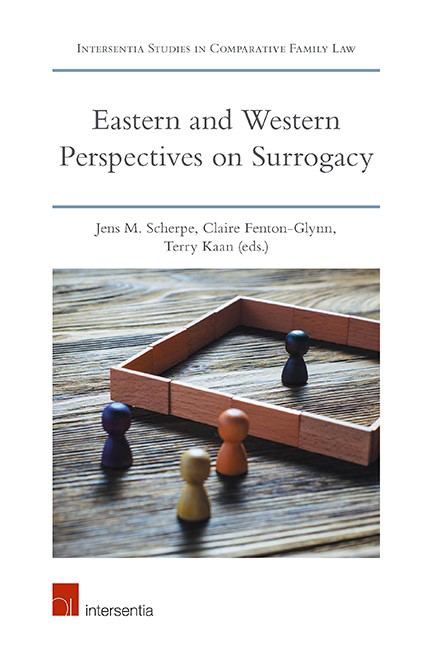Book contents
- Frontmatter
- Preface and Acknowledgements
- Contents
- List of Contributors
- Introduction
- Questionnaire
- PART I WESTERN PERSPECTIVES
- THE PROHIBITIVE APPROACH
- THE TOLERANT APPROACH
- THE REGULATORY APPROACH
- Greece
- Israel
- South Africa
- New Zealand
- Portugal
- Iceland
- THE FREE MARKET APPROACH
- THE INFLUENCE OF INTERNATIONAL COURTS
- PART II EASTERN PERSPECTIVES
- THE PROHIBITIVE APPROACH
- A TOLERANT APPROACH?
- REGULATION THROUGH PROFESSIONAL MEDICAL BODIES
- FROM FREE MARKET TO REGULATION
- PART III COMPARATIVE PERSPECTIVES ON SURROGACY
- Index
- About the Editors
New Zealand
from THE REGULATORY APPROACH
Published online by Cambridge University Press: 26 June 2019
- Frontmatter
- Preface and Acknowledgements
- Contents
- List of Contributors
- Introduction
- Questionnaire
- PART I WESTERN PERSPECTIVES
- THE PROHIBITIVE APPROACH
- THE TOLERANT APPROACH
- THE REGULATORY APPROACH
- Greece
- Israel
- South Africa
- New Zealand
- Portugal
- Iceland
- THE FREE MARKET APPROACH
- THE INFLUENCE OF INTERNATIONAL COURTS
- PART II EASTERN PERSPECTIVES
- THE PROHIBITIVE APPROACH
- A TOLERANT APPROACH?
- REGULATION THROUGH PROFESSIONAL MEDICAL BODIES
- FROM FREE MARKET TO REGULATION
- PART III COMPARATIVE PERSPECTIVES ON SURROGACY
- Index
- About the Editors
Summary
GENERAL LEGAL FRAMEWORK
Surrogacy is regulated in New Zealand under the Human Assisted Reproductive Technology Act 2004 (the ‘HART Act’). The specific provisions are found in ss. 14 and 15. Section 14 states that a surrogacy arrangement ‘is not of itself illegal, but is not enforceable by or against any person’. The section continues that it will be an offence to give or receive valuable consideration for the participation or arranging for the participation of a person in the arrangement, although exceptions are made for payments directly to medical and legal professionals for specified services. Section 15 prohibits advertising in relation to commercial surrogacy. Altruistic surrogacy is not specifically mentioned, and therefore appears to be permitted by default. Should a dispute arise, the language of s. 14 gives judges little guidance as to Parliament's intention, except that the arrangement is unenforceable.
This is not, however, the extent of the regulation of surrogacy in New Zealand. The HART Act also requires that the Minister of Health set up two national-level committees: an advisory committee and an ethics committee. It then categorises reproductive procedures as either ‘established procedures’, ‘prohibited actions’ or ‘regulated activities’. Established procedures (which must be declared as such by the Governor-General and are currently found in the Schedule to the Human Assisted Reproductive Technology Order 2005) are those which can be carried out by fertility clinics without any external approval. Prohibited actions (which are listed in Sched. 1 of the HART Act) are those which can never be carried out. Under s. 8, carrying out a prohibited action is an offence punishable by a term of imprisonment not exceeding five years, or a fine not exceeding NZ $ 200,000, or both. All other procedures are classified by default as regulated activities. Surrogacy falls into this last category. Under s. 16 it is an offence for a fertility clinic to carry out a regulated activity ‘without the prior approval in writing of the ethics committee.’
- Type
- Chapter
- Information
- Eastern and Western Perspectives on Surrogacy , pp. 203 - 228Publisher: IntersentiaPrint publication year: 2019

